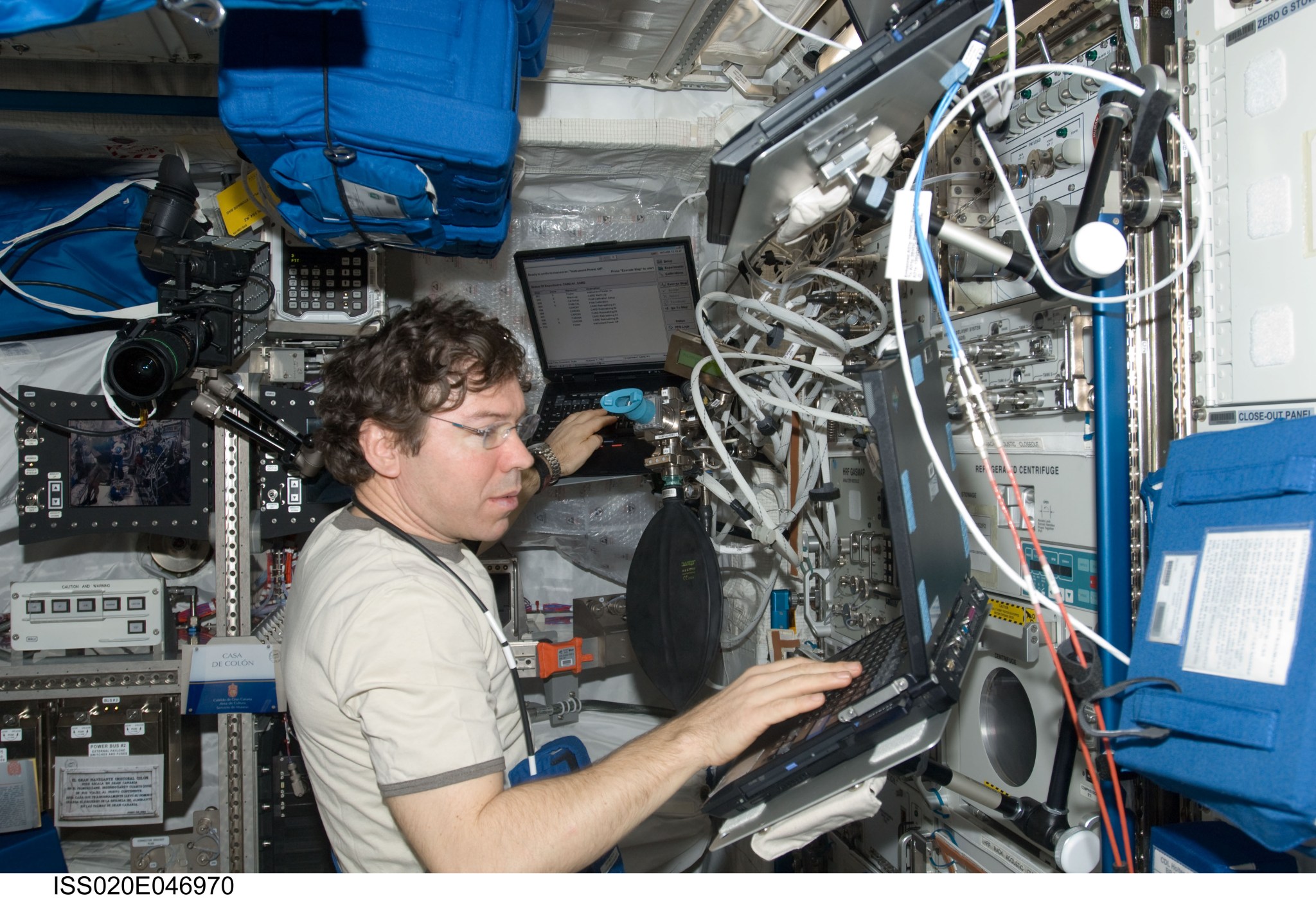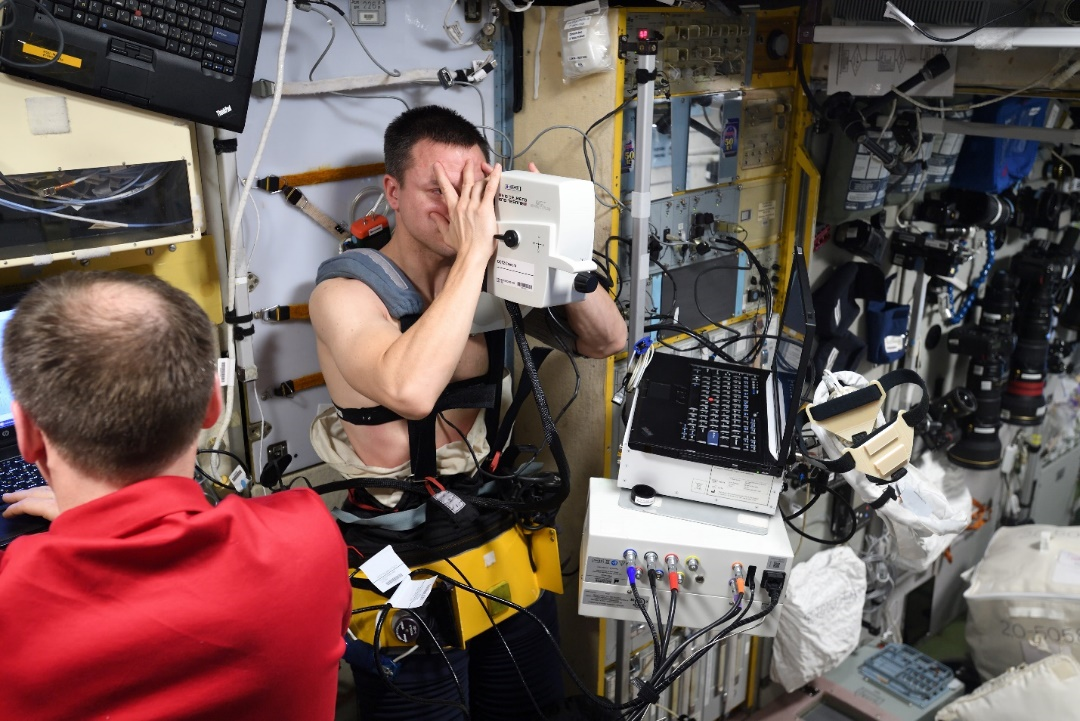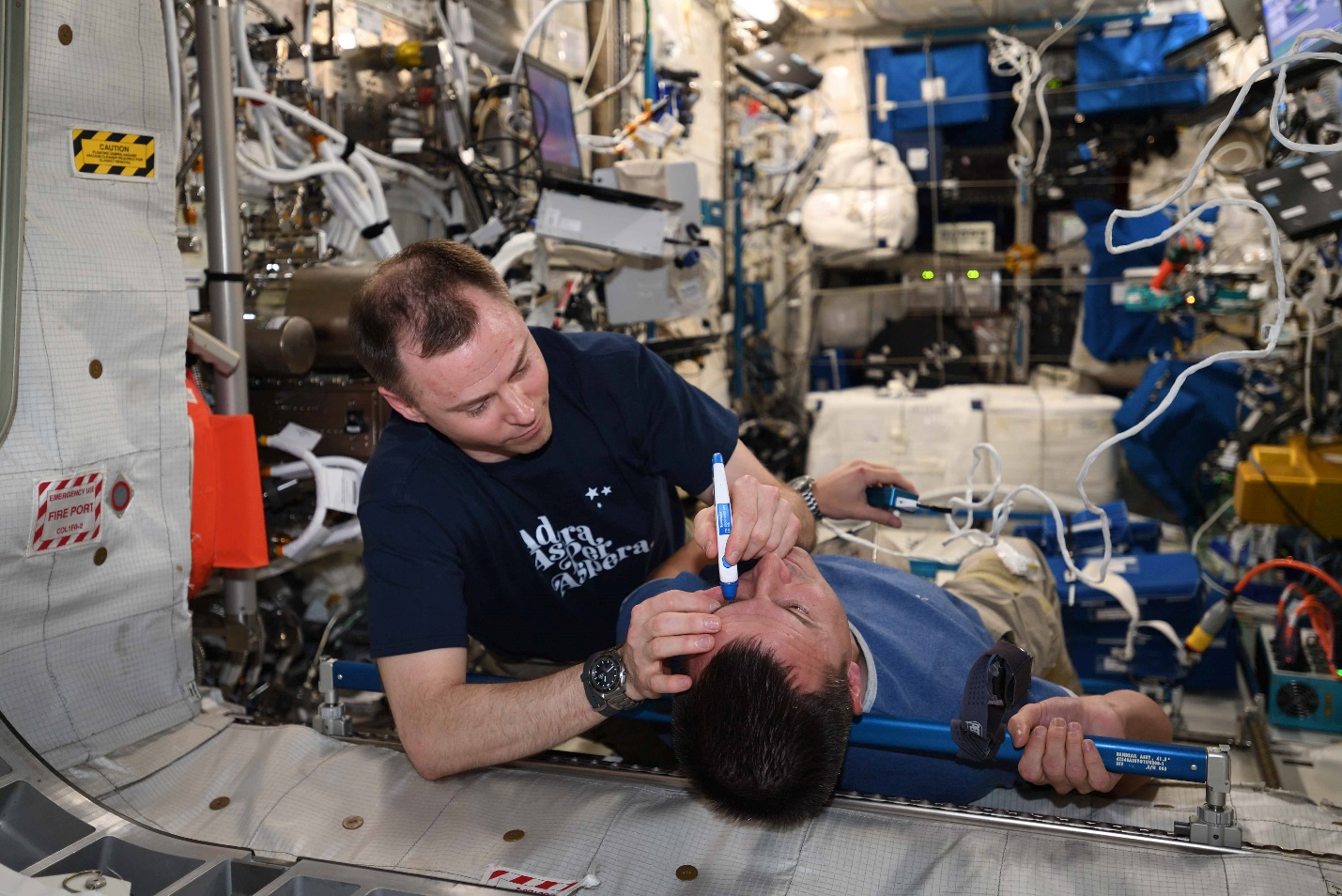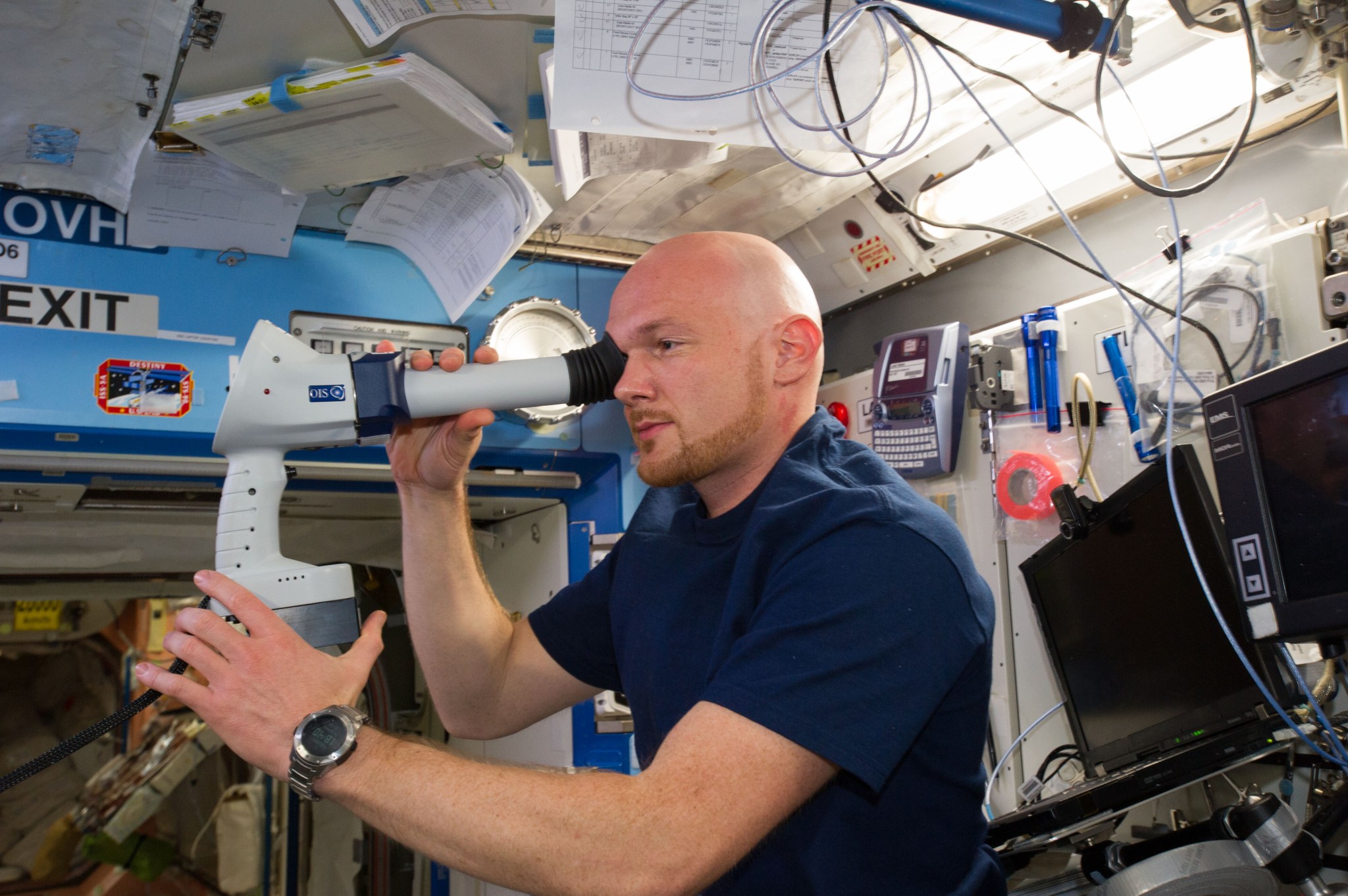
NASA astronaut Michael Barratt flew a six-month mission aboard the International Space Station in 2009. As the days went by, Barratt and fellow crew member Canadian Space Agency astronaut Robert “Bob” Thirsk began having trouble reading the procedures for scientific research conducted on the orbiting lab. Slightly stronger pairs of glasses solved their problem, but the two, both physicians, decided to look deeper.
They found classic symptoms of what is now known as Space-Associated Neuro-Ocular Syndrome (SANS). Symptoms include swelling in the optic disc, which is where the optic nerve enters the retina, and flattening of the eye shape. When researchers looked back, they found certain aspects of SANS in even the earliest spaceflights.
For nearly 20 years, humans have continuously lived and worked aboard the space station. Its availability for long-duration missions and research was key to identifying the issue. “It took having this well-equipped lab, the accumulated flight experience, and long-duration flight,” Barratt says. “Bob and I noticed something, and we just reached over and grabbed an instrument and started looking at it.”
He explains that finding an issue such as this follows a logical progression, starting with its discovery, in this case pieced together by many people. “Then comes characterization: how often you see it, in how many people, how long it takes to appear, to what degree, and the signs,” Barratt says. “After that comes understanding of the mechanism, not just what happens and when, but why. Next is looking for countermeasures and treatment to prevent it or keep it from becoming a risk.”
That progression can be lengthy and complicated, and each step involves research.
An early study by NASA’s Human Exploration and Operations (HEO), Vision Impairment and Intracranial Pressure (VIIP), used MRI and other tools to examine changes in the eye structure of crew members. The VIIP moniker came from an early hypothesis that shifts in fluids toward the head due to lack of gravity caused increased pressure in the brain, leading to changes in eye structure and, as a result, vision. But it remains unclear whether lack of gravity causes pressure in the brain to change, so with fluid pressure no longer assumed to be the sole cause, the condition became known as SANS.

NASA’s Human Research Program (HRP) launched another experiment, Ocular Health, which gathered data from station crew members during and after flight from March 2013 to September 2016. Another investigation, Fluid Shifts, began in 2015 and continues through fall 2020. It measures fluid movement into and out of the head to determine how these shifts may lead to changes in the eye. The study was the first to reveal changes in how blood drains from the brain during weightlessness. In addition, the study evaluated the use of a device that creates a pressure difference on the lower body to prevent or reverse fluid shifts. NASA’s one-year mission also included vision among the physical changes it examined.

While a definitive cause of SANS remains largely unknown, a growing body of evidence from the research so far suggests it involves multiple factors: likely increased pressure in the head as well as, possibly, overfilling of blood vessels, inflammation, elevated levels of carbon dioxide, radiation, genetics, and B vitamin status.
“We didn’t see swelling of the optic disc when we flew two-week shuttle missions, but we did on long-duration missions, so there is definitely a time element,” says Steve Laurie, a KBR scientist with NASA’s Human Health and Performance (HHP) Directorate at Johnson Space Center.
He adds that signs of SANS appear in roughly 70 percent of crew members, but with significant individual variability. “We still believe headward fluid shift underlies SANS, so the question is how it causes these effects. On top of that, you have modifying factors and variability in outcomes in different crew members. We do not know why this variation exists.”
The variation is one focus for more research, especially as missions become longer. “SANS represents a critical risk for deep space exploration, where astronauts will experience spaceflight for longer periods of time and cannot easily return to Earth to address a medical emergency,” says HRP chief scientist Jennifer Fogarty.
“The idea of embarking on a long-duration flight to Mars without having made this discovery is mind-boggling,” Barratt adds. “We would have had people taking voyages of up to three years and coming back with all these problems that would have taken us forever to figure out.”
SANS involves both the eyes and brain, and future research is planned to study both, with one study examining more structural changes in the eye and their effect on visual function. That work plans to include 10 astronauts on missions of roughly a year, 10 others on six-month missions, and 10 more on shorter flights, says KBR HHP researcher Brandon Macias. “Those different durations may enable us to see the effect and perhaps understand what might happen on longer missions.”

The study plans to employ new hardware and technology as well, to better identify specific changes such as in peripheral vision.
The station also provides a platform for testing ways to prevent or reverse these changes and preserve astronaut vision throughout future missions and when they return, Fogarty notes.
“The space station has provided an amazing opportunity to characterize and understand how the human body adapts to the extreme environment of spaceflight for more than 20 years,” she says. “While the human body is incredibly adaptable and resilient, some of the changes that take place during a mission could make astronauts vulnerable to decreased performance or health.”
Scientists and astronauts continue to work hard to protect crews in space from that possibility.
Melissa Gaskill
International Space Station Program Research Office





























